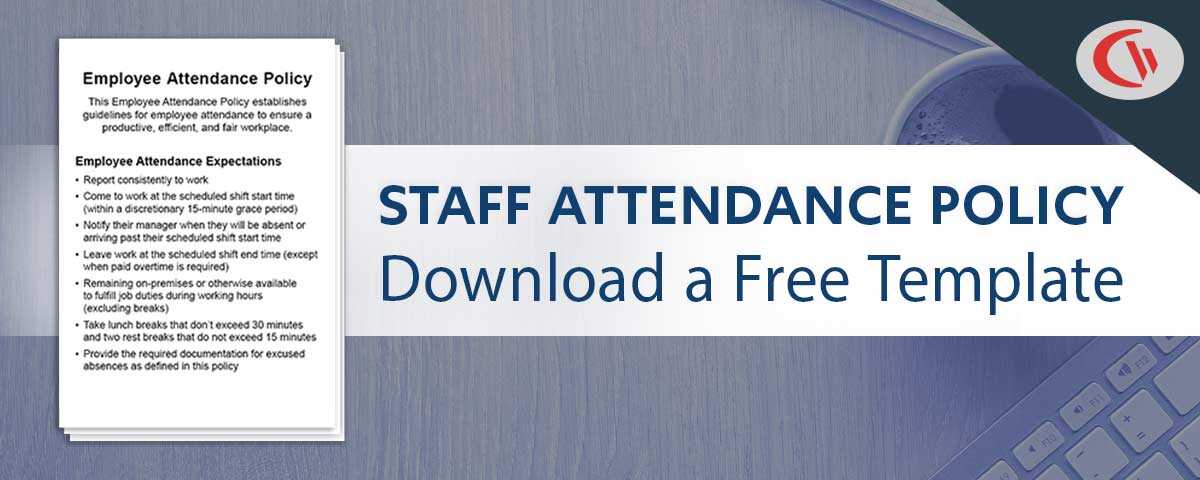The Pros and Cons of Working from Home For Managers of Remote Teams

Ever since the internet made it a possibility, companies have been weighing the pros and cons of employees working from home.
But when the COVID-19 pandemic rose to a global scale in March of 2020, businesses around the world were forced to quickly pivot and adapt. As the infectious disease began to spread rapidly, businesses realized that their employees would not be able to resume their work duties within their normal office spaces, making the idea of employees working from home not only a possibility, but a necessity.
Cubicles, boardrooms, and shared bathrooms – all common entities of an office space – are breeding grounds for the deadly coronavirus. And as social distancing regulations were being rolled out by local governments under the guidance of the World Health Organization, the thought of having many people under one roof for the purpose of work became a dangerous one.
The economic effects of the pandemic were imminent, and business owners, not wanting to fall too far behind, quickly developed innovative work from home strategies and policies for their employees. Given the extreme circumstances, weighing the pros and cons of working from home was no longer a careful balancing act; quick and definitive actions were needed.
In a matter of days, offices were shut down and employees were told to begin adjusting to a new remote work reality.
But many companies across a variety of industries have long been permitting remote work for their workers. With the internet and affordable computers becoming widespread, some of the more progressive fields of work such as web development, data entry, and online customer support have developed successful work from home strategies.
Whether your company is looking for a temporary work from home solution, or if it can become a permanent fixture to your business model, it will always be important to consider both the pros and cons of having your employees working from home.
Table of ContentsThe Pros of Remote Workers
Should employees work from home after COVID-19? Consider these benefits of a remote workforce when debating whether or not this working style is suitable for your company in the long term.
1) Improved Employee Retention
While working from home isn’t for everyone, the research has shown time and time again that employees want to have the option to work remotely at least some of the time.
Employees that are offered flexible work arrangements are not only happier and more productive—they’re more likely to stick around. Providing a good employee experience can lead to positive employee testimonials that the organization can use to help attract more talent.
Here are the top 5 statistics that show the impact that WFH has on employee retention
- According to research from Global Workplace Analytics, a staggering 95% of employers say that remote work has a high impact on employee retention
- A May survey of 1,000 U.S. adults showed that 39% would consider quitting if their employers weren’t flexible about remote work.
- In a 2018 report from Owl Labs, 44% of the employees they surveyed said that their employers did not allow employees to work remotely
- 80% of employees in the 2019 Owl Labs report said that they want to work from home at least some of the time, and…
- Their 2020 report found that 80% of employees expect to work remotely at least 3x per week after COVID-19 guidelines are lifted
2) It’s Easier Than Ever
Long gone are the days of large workforce populations flocking to factories or job sites to get to work with industrial machines and archaic tools. Now, most workers living in developed countries are working from computers and over the internet. Laptops, cell phones, and wifi connections have enabled us to take our work with us wherever we go.
A decade or two ago, remote work would not have been possible for most companies. Employees didn’t have regular access to high speed internet. Computers weren’t as affordable. Online applications and resources were not yet developed to allow effective communication.
But now, with high speed internet services being commonplace in most households. the costs of company-issued laptops greatly reduced, and remote access solutions, a work from home strategy has never been easier and more affordable to implement.
The common workforce is a technologically skilled bunch, capable of understanding and utilizing a vast array of computer tools and applications needed to get their job done. Online communication applications such as Zoom and Microsoft Teams have created places for remote workers to connect with one another and collaborate on work projects. Project management software such as Zoho and Redmine equip management teams with the tools needed to effectively streamline company projects and track employee productivity.
3) Hiring Remote Workers Saves Money
Scenes of a bustling office space on the top floor of a high-rise building in a busy city have been the depiction of white-collar business in Hollywood. Workers in suits battling it out in boardrooms, the busy secretary at the front desk, and the concierge permitting business partners up the elevator have portrayed successful businesses in movies and television.
But we all know that Hollywood often only offers the more glorious depictions to the viewers.
Most business owners will tell you that the costs of leasing and maintaining an office space can be a company’s greatest rival. Long-term rental agreements, recurring bills, and the money required for cleaning services can be crippling for even the most successful company. Oh, and don’t forget the demand from employees to have the lunchroom stocked with a variety of snacks and ethically sourced coffee beans!
When businesses adopt a work from home strategy, the savings gained from removing or at least reducing the costs of a traditional office space can be a game changer. Business owners can use the money saved from overhead and invest it into further developing the company.
Even the process of hiring new team members to work remotely is more cost-effective and straightforward when compared with traditional methods. As explained in this guide to video recruiting, you can both promote your company to prospective employees and conduct interviews without incurring costs for brick-and-mortar office space.
4) Reduced Environmental Impact
In light of the COVID-19 pandemic, it is important to not forget what is widely regarded by scientists to be our greatest global threat of all – the deterioration of our environment and planet.
With high levels of energy consumption a necessary evil of large offices, and considering the volumes of fuel exhausted by the public transportation used by workers to commute to work daily, it is no doubt that having employees work from home greatly reduces a company’s environmental impact.
In fact, Global Workforce Analytics estimates that if everyone who works in an office would work from home for just half of the time, greenhouse gas emissions would be reduced by 54 million tons per year!
5) Better Work-Life Balance
In densely populated cities where the vast majority of the working population lives, the task of just getting to the office can be as daunting and time consuming as the work itself. The average American spends 35 minutes each day on their commute to work. Employees who work from home can put that time towards more healthy and productive activities such as exercising to help better their lives.
Being able to eat their own food while at home is another health-related benefit for remote workers. When working at the office, eating out at fast food joints can be a regular routine for many employees. Not only does this impact overall health, it is also a costly habit that is hard to shake.
For employees living with their spouse and children, working from home can provide a great opportunity to help strengthen those relationships.
Not having employees commuting daily on public transportation and working under one roof in an office also greatly reduces the spread of illnesses, meaning fewer sick days and a healthier, more productive workforce.
Disadvantages of Working From Home
As a business owner, the pros of allowing employees to work from home are probably quite enticing, right?
Before you jump the gun and invest your time and resources into developing a work from home strategy for your company, it will be important to understand and consider the disadvantages of working from home that your business and employees may face. Let’s take a look at some of the work from home cons below.
1) Isolation and Low Morale
To many employees, the office is the place where most of their socialization occurs. From weekly team lunches to casual chats at the coffee machine and all the camaraderie between, employees have grown accustomed to the social atmosphere of an office.
When working from home, employees can begin to feel isolated. With little to no in-person connectivity between team members, the morale of your staff can quickly drop. And when morale is low amongst your team, productivity levels will almost certainly sink with it.
2) Complicated Network Issues
In order to maintain levels of high productivity on par with what was produced in-office, it will be critical for your company to configure effective network solutions. This should include a network of shared folders that will enable employees to easily access and share work files.
However, considering that your remote workers will each be logging into the company network through their own internet connections, these network solutions can quickly become complicated. When an entire staff of remote workers are accessing the shared folders configured by your IT team, the hardware and servers needed to support these high levels of bandwidth will need to be able to support the activity. Unfortunately, the costs to configure and maintain these shared network systems can become quite high.
Not only will these networks cost your business money, employees may also require training to become accustomed to accessing and navigating the shared network. When pieces of technology such as VPNs are added to the mix, training is often required.
3) Difficulties With Collaboration
Despite the number of applications available that are designed to help improve collaboration between remote work teams, there is no doubt that working from home can negatively affect a company’s ability to effectively collaborate on team projects. It is hard to match the creative vibe and energy of a boardroom for teams connected over webcams and microphones.
4) Poor Work Environments
Employees working from home can be a victim of their own environment at times. The number of distractions within any given household can be detrimental to an employee’s ability to focus on work and be productive. Whether it’s the pet dog, a dispute with a roommate, or the temptation of an afternoon baseball game on TV, employees working from home will need to stay disciplined in the face of these distractions.
On top of these sorts of distractions, remote workers will also likely have a less than ideal home office set up. Workers accustomed to the ergonomic designs of their office desks and chairs will have a hard time adjusting to their new workspace at home. Also, many people do not have the additional pieces of tech equipment such as second monitors and printers at their homes. Without these pieces of equipment at home to emulate their office, it will be hard for employees to reach their potential productivity output.
5) Increased Security Risks
Perhaps the most concerning con that management should consider when developing a work from home strategy is the threats to security. When employees are working from home and accessing company files remotely, they are at a greater risk to fall victim to cyberattacks.
Phishing scams and malware attacks are common types of security threats that can have devastating effects on a company. As cyber criminals are constantly developing new ways to infiltrate company networks and exploit their data, having employees work from home without proper security protocol could have major legal and financial consequences.
Employees who freely browse the web while working at home may unknowingly download a piece of malicious software designed by hackers to steal company information. Companies working within the healthcare industry are at a high risk of these attacks as the personal information of healthcare clients has substantially increased in value recently on the black market. Hackers are developing ways to steal this information and use it to exploit companies for ransom.
Case Study: See how First Choice Health protects patient data with CurrentWare
And it isn’t just the way that employees spend their time while on the computer that is a risk to a company’s security. The pieces of hardware used by employees, such as USB sticks and external hard drives, can be misplaced or stolen. If these items fall into the wrong hands, the information and data contained can be lost forever or even exploited.
6) Struggles With Remote Employee Productivity
The number one objective of most businesses is productivity. Regardless of the field of work, high levels of productivity often mean higher levels of profits for the company. If you own a graphic design company, then your employees will need to be producing designs at a sufficient rate to satisfy your clients. If they don’t, you’ll most likely lose out on business and ultimately lose out on money.
And considering the benefits employees receive and the money companies can save by allowing employees to work from home, it is safe to say that the biggest deterrent to all of this is based on the assumption that production levels drop when employees work from home.
Without a direct line of sight and supervision over the employees, it will be hard for managers to determine whether the remote workers are in fact working. After all, they’re away from the workplace and surrounded by ample distractions in their remote office.
Concerns about remote employees slacking on the job have instilled fears about managing the productivity of a remote workforce for quite some time. For this reason many managers will debate the pros and cons of employee monitoring for their remote workers.
My advice? Download our free white paper to learn the best practices for monitoring remote employees. With these tips you can use workplace monitoring software to improve the productivity of your remote workers while mitigating the most common concerns.
Once you’ve planned your WFH monitoring strategy, you can use our free Workplace Monitoring Policy template to set privacy expectations for your remote employees.
Learn More: Remote Employee Monitoring Software to Manage WFH teams
FREE WHITE PAPER
Best Practices for Monitoring Employees
In today’s privacy-conscious world employers need to monitor employees in a way that is transparent, minimally invasive, and respectful of employee privacy.
Want to use monitoring tools to get instant visibility into employee productivity, engagement, and PC usage? Read this white paper to learn the best practices for monitoring employees in the workplace.
Conclusion
Now that you know about the pros and cons of having your employees working from home, you will be able to better determine if this strategy is appropriate for your company.
Need to manage the security and productivity of your remote workers? CurrentWare offers a suite of computer monitoring, web filtering, and device control software to keep your employees productive and secure no matter where they work. Get started with a FREE 14-day trial.


